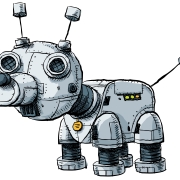Toyota creates robots to assist and support ageing populations
Robin Christopherson | 07 May 2017Not satisfied with racing competitors to be first at the starting line with self-driving cars, Japanese automaker Toyota is looking to a robotic future for its ageing population.
A caring crisis for the older generations
Much of the world is ageing. We’re living longer through better nutrition and medical care, but Japan has a considerably higher percentage of older people in its population than the global average. This is due to a very low birth rate that continues to decrease year on year. The over 65s accounted for 26.7% of the population in 2015, far exceeding the global average of about 8.5%.
With this demographic comes labour shortages, a looming pension crisis and the various challenges of caring for this ageing population and keeping them healthy and mobile.
At the same time, car sales in Japan have fallen 8.5% between 2013-2016, as older drivers stop buying cars and car ownership also becomes less of a priority among younger drivers.
This combination of reducing car sales and the increasing needs of older citizens to remain mobile has lead Toyota, the world's second largest automaker, to explore the possibility that designing and manufacturing robots to both care for the elderly and help keep this age group mobile may be as important as producing cars in the coming decades.
Toyota recently announced its first foray into commercialising rehabilitation robots, launching a rental service for its 'Walk Training Assist’ system, which helps patients to learn how to walk again after suffering strokes and other conditions.
"If there's a way that we can enable more elderly people to stay mobile after they can no longer drive, we have to look beyond just cars and evolve into a maker of robots," Toshiyuki Isobe, chief officer of Toyota's Frontier Research Center, told the news service Reuters.
Toyota's system follows the release by another major Japanese carmaker Honda of its own "robotic legs” in 2015 which were based on technology developed for its ASIMO dancing robot.
According to the International Federation of Robotics, global sales of assistance robots for the elderly and disabled communities will total about 37,500 units in 2016-2019 and this is expected to increase substantially within the next 20 years.
Rent a car – own a robot
In many countries around the world car ownership has been in decline. If you consider the implications of self-driving cars, which have the potential to turn private transport into a convenient commodity available at a moment’s notice and vastly more affordable than the purchase and up-keep of a car that, on average, sits unused for 96% of the time taking up space and depreciating at an alarming rate, then Toyota’s strategy to branch out into a growth area of consumer robotics seems to be a sensible one.
No matter how you do the calculations, in future we'll only need a fraction of the numbers of cars when cars can drive around the clock - only briefly stopping from time to time to top up their batteries. Thus it may be that the autonomous cars of the future will not be privately owned, but simply hailed as the need arises.
In contrast, the robots of tomorrow may be seen as an invaluable part of every home - helping everyone with daily tasks around the house, or assisting those with dexterity or mobility difficulties to move around, do the chores and stay active.
Robots are a man’s best friend
Disabled people have long had help on-hand to enable them to be more independent. Speaking as a guide dog owner, I know how extremely useful some extra help can be when getting around. Dogs are also used to help people with hearing, dexterity, mobility and anxiety challenges – as well as invaluable early-warning systems for those with epilepsy.

However, even man’s faithful friend has his limitations. Technology is increasingly augmenting the abilities of people with impairments due to age or disability. For example, I use my smartphone on a daily basis to know where I am and what’s around me – as well as for a thousand other things that vastly increase my life and work choices.
Thus, while I’m quite confident that robots won’t be replacing what a well-trained canine can do any time soon, they will undoubtedly be working alongside them (and their human counterparts) to ease and extend the everyday lives of millions of people in Japan and around the world.
From cars to carers
Toyota hopes to make a wide range of robots with practical applications. Isobe said that mass producing robots would be a natural step for the company whose mission is to "make practical products which serve a purpose.”
“The biggest challenges have been in determining the needs of the robot market, which is relatively new, and to ensure that our products are safe," Isobe add. “If there's a need for mass produced robots, we should do it with gusto."
Toyota’s vision for the robots of tomorrow is one of smart and sophisticated enablers, continuously helping you and your family members from minute-to-minute rather than just from A to B.
One day, in the not too distant future, the sight of robots helping people both at home and on the streets of our towns and cities, may be as common as the sight of cars is today.
Futher future-gazing
- How merging minds with computers could help disabled people
- Reaching out with your mind - a new age of thought-controlled robotics empowers people with disabilities.
Are you an older person who needs help to make tech work better for you? Know an older person who needs IT help at home? Try our volunteer ITCanHelp service.



